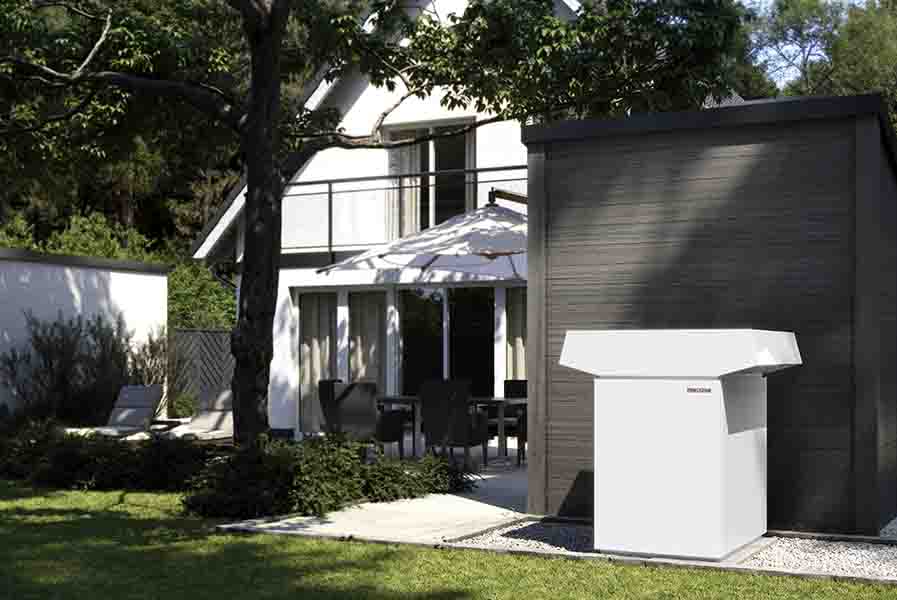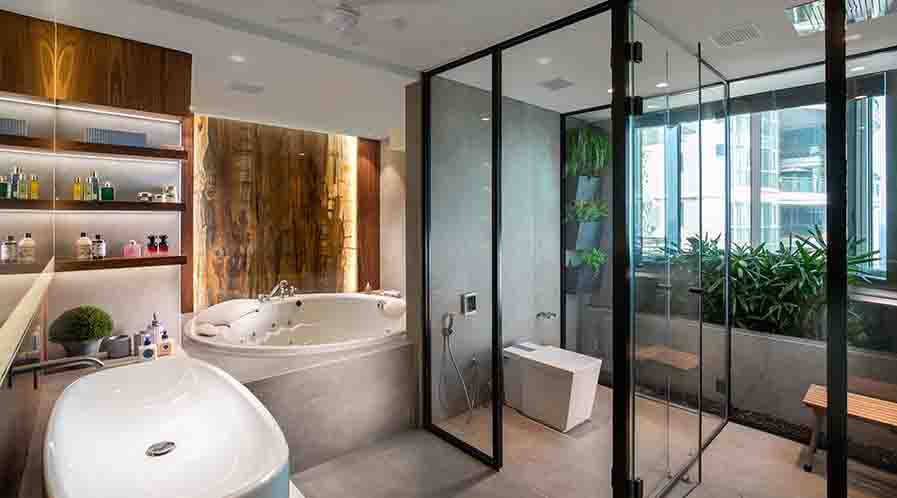Sustainable Washroom: Optimising Energy Usage
Energy usage in a washroom can be reduced substantially by making careful design considerations outlines experts to Mrinmoy Dey
Washrooms are an integral part of the human lifestyle and built environment. On average a person spends 30 minutes a day which is more than 182 hours a year in a washroom. It is a fact that washroom accounts for a major chunk of water and energy consumption – especially in residential, hospitality projects and hospital. Even in other types of commercial spaces, the energy usage is still significant enough. Hence, it is vital to create an eco-friendly and low carbon footprint for washrooms – be it in residential or commercial projects.
Minimising Energy Footprint
While designing, energy conservation can be achieved by micro and macro planning. “At macro level such as for a campus, a system like STPs are installed for recycling the water that is further used for flushing and irrigation and cooling towers of HVAC systems can be appropriately designed. At the micro-level, the use of aerators to control the water flow is recommended to be installed in faucets like basin mixers, hand, and overhead showers,” shares Sandeep Shikre, President & CEO, SSA Architects.

He further adds that in commercial restrooms, the highest amount of energy is consumed by lighting and ventilation fans (as there are generally limited or no showers – with the exception being hospitals and hotels). Hence motion/occupancy sensors and timer-based controls result in maximum savings in the restrooms along with LED light fixtures.
Talking about strategies to attain energy-efficient and eco-friendly restrooms, Ponni M. Concessao, Principal Architect, Oscar & Ponni Architects adds, “The common factors are low flow faucets and showerheads, motion sensor urinals, solar-powered water heating systems, LED motion sensor power-saving lighting fixtures, hand dryers and eco-friendly bath products. Green design-oriented water closets are also preferred sanitary ware that can be used. As we design very large residential complexes, Institutional campuses, Secretariats and hotels we incorporate these energy-reducing designs and principles as much as we can.”

Sandeep Shikre
President & CEO, SSA Architects
“One must review the energy performance index and overall life cycle cost as well to cautiously select the equipment and material to reduce the energy footprint.”
Material Selection
It is important to understand the embodied energy consumption and evaluate the cradle to cradle process of equipment and materials. “One must review the energy performance index and overall life cycle cost as well to cautiously select the equipment and material to reduce the energy footprint. The selection of plumbing fixtures will however impact the water consumption and the electrical consumption of the project. Low Flow faucets will have the maximum impact as potable water is mandatory for hand wash,” says Shikre.
Concessao adds, “Eco friendly materials that are natural are best suited to reduce the carbon footprint. Materials such as natural stone, wood as well as tiles are best advisable to be used. Low VOC paints that are anti-bacterial are strongly recommended. Storages in toilets can be finished with anti-bacterial laminates and hardware.”

Ponni M. Concessao
Principal Architect, Oscar & Ponni Architects
“In the Indian scenario, especially in residential projects, solar energy is primarily used for water heating in washrooms and kitchens.”
Fixtures and Bathroom Appliance
Residential restrooms (including hotels and hospitals) consume energy for heating. The best way to minimise this is by using a solar hot water system. In tall buildings where there isn’t sufficient exposed roof area compared to the hot water demand, heat pumps provide the most efficient way to heat water.
Circulating hot water pump efficiency and insulation on the pipes also impact the overall energy demand. Another way to reduce energy usage would be to capture the heat from the shower. For example, Zypho has created an innovative recovery/ recapture system that can be retrofitted into existing showers to recapture heat from the shower water. It is used to pre-heat the fresh mains water going up to the shower, helping to save up to 67% of the energy cost of heating a shower.
“There are certain chillers which have desuperheaters – which use the waste heat from the compressors to heat water. However, the efficiency of chillers with desuperheaters and chillers + heat pumps should be simulated based on the size of the chiller and the total hot water demand,” informs Shikre.
An energy-efficient showerhead can reduce the amount of water and thereby reducing the energy required to heat it. There are two main types of energy-efficient shower heads – non-aerating and aerating showerheads. Non-aerating showerheads work by forcing the water through smaller holes to produce a high-pressure flow with a vigorous ‘massaging’ effect. Aerating showerheads work by restricting the flow of water and mixing it with air. This makes the water appear to flow at the same volume as a normal shower head and results in a more gentle showering experience.
Shirke further adds, “Also, there is the hand dryer vs paper towel debate. Hand dryers consume electricity (which may be renewable) while paper towels use enormous resources in manufacturing transporting and disposal.”
“There are certain chillers which have desuperheaters – which use the waste heat from the compressors to heat water. However, the efficiency of chillers with desuperheaters and chillers + heat pumps should be simulated based on the size of the chiller and the total hot water demand.”
Switching to Solar
Solar energy has emerged to be one of the major sources of energy in residential and commercial projects. “In the Indian scenario, especially in residential projects, solar energy is primarily used for water heating in washrooms and kitchens. Terraces of homes and institutions are fitted with state-of-the-art solar panels and infrastructure that supports the acquisition and storage of solar energy. Given the current pandemic era and the emphasis on using clean energy, I foresee solar energy as the primary means of energy in building construction in the future,” opines Concessao.
Solar hot water systems provide the most sustainable way of water heating. However, there is often a paucity of the solar exposed roofs, compared to the demand for hot water, especially in tall buildings, where the roof area is limited and hot water demand very high.
Talking about how best to tackle it, Shirke adds, “In such cases, concentrator lenses may be used to increase the heating efficiency of the solar collectors. Also tracking devices may be used in conjunction with concentrator lenses to focus the solar energy on to the solar collectors.”
He further adds that another sustainable way is by using natural gas-fired water heaters (PNG). Although, the capex of maybe more at the time of installation based on energy savings, gas heaters generally make up the difference in price in about one to two years.
Tags: Bathroom Fittings, Bathroom Interiors, Bathroom Technology, Bathroom Trends, Sustainable Washroom



